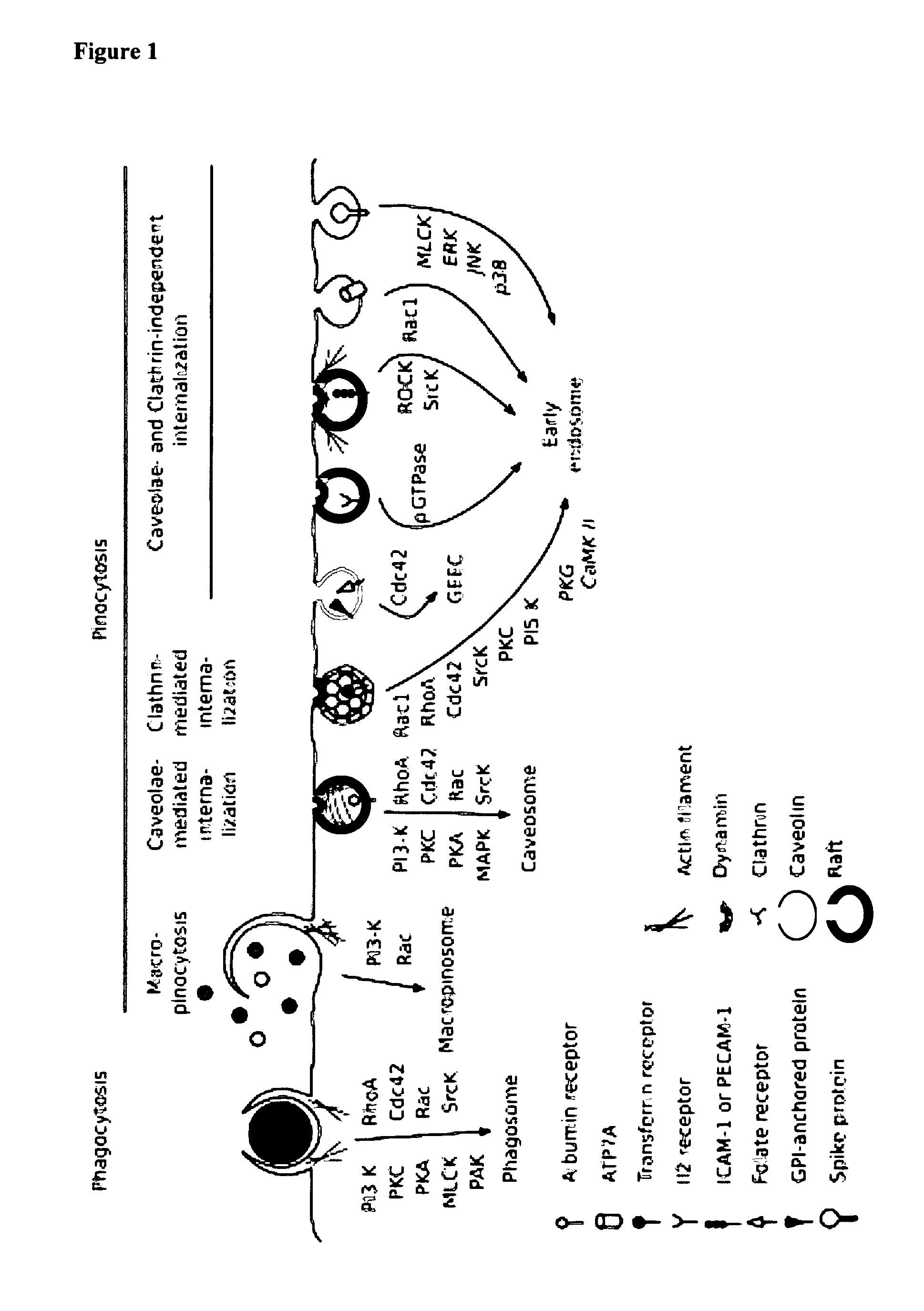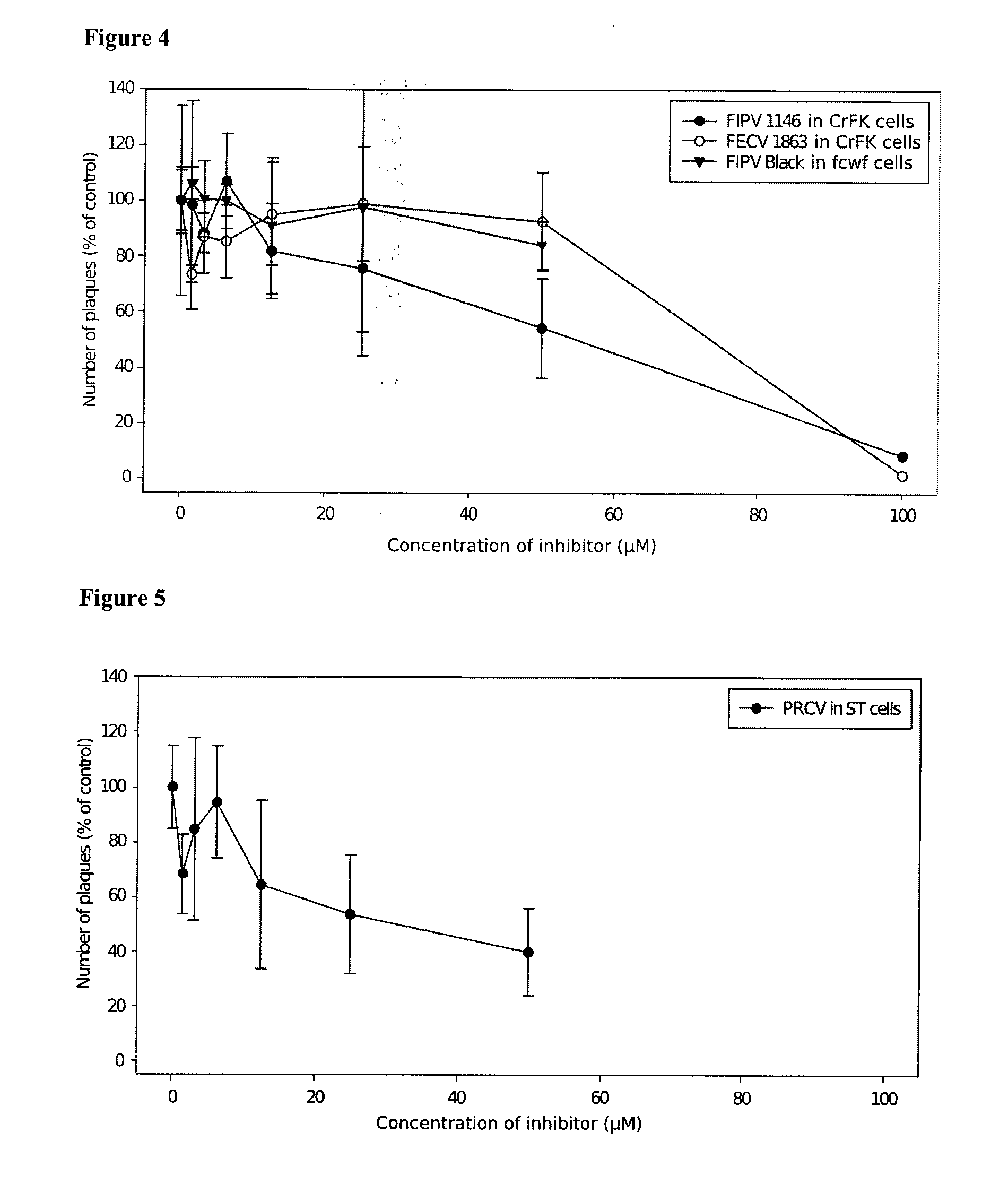Methods and compositions in the treatment of coronaviruses
a technology of coronavirus and composition, applied in the field ofvirology, can solve the problems of feline infectious peritonitis (fip), high mortality, and difficult assessment of the economic impact of coronaviruses as causative agents of the common cold
- Summary
- Abstract
- Description
- Claims
- Application Information
AI Technical Summary
Problems solved by technology
Method used
Image
Examples
example 1
The Internalization of FIPV Ag-Ab Complexes is Dependent on MLCK Kinase Activity
Material and Methods
Viruses and Antibodies
[0050]A third passage of FIPV strain 79-1146 (American Type Culture Collection (ATCC)) on CrFK cells was used (McKeirnan et al., 1981). Polyclonal anti-FCoV antibodies were kindly provided by Dr Rottier (Utrecht University, The Netherlands). The antibodies were purified and biotinylated according to manufacturers instructions (Amersham Bioscience, Buckinghamshire, UK). FITC-labeled polyclonal anti-FIPV antibodies were purchased from Veterinary Medical Research and Development (VMRD, Pullman, Washington, USA). The monocyte marker DH59B, recognizing CD172a, was purchased from VMRD. Secondary antibodies and reagents: streptavidin Texas Red, streptavidin FITC and Phalloidin Texas Red were purchased from Molecular Probes (Molecular Probes-Invitrogen, Eugene, Oreg., USA).
Isolation and Inoculation of Blood Monocytes
[0051]Feline monocytes were isolated as described previ...
example 2
Internalization of Several Virus Types is Regulated by MLCK
Material and Methods
Plaque Reduction Assays
[0068]The antiviral potency of ML-7 was tested on the entry of the following viruses: feline coronavirus, porcine coronavirus, porcine arterivirus, feline herpesvirus, equine herpesvirus, herpes simplex virus 1 and swine influenzavirus, by checking to which degree the inhibitor is able to reduce the number of “Plaque Forming units” (PFU), or the number of infected cells (for feline coronavirus and porcine arterivirus). A PFU is a virus particle that is able to infect a cell and produce enough progeny viruses to infect surrounding cells. The antiviral potency of ML-7 on the entry of the feline coronavirus and porcine arterivirus in primary cells (monocytes and macrophages respectively), was determined by counting the number of single infected cells and not the plaques. These primary cells do not divide in vitro, and therefore they can not grow into a monolayer hence, plaques can not ...
example 3
Immune-Evasion of the Pseudorabies Virus is Dependent on MLCK
[0086]Pseudorabies virus (PrV) is a herpesvirus in pigs that is often used as a model for human herpes simplex virus infections. When porcine monocytes (the in vivo target cells) are infected with PrV, viral proteins are expressed at the plasma membrane. Upon addition of virus specific antibodies, the formed antigen-antibody complexes are internalized in the cell. This is an immune-evasion process by which the infected cells can hide themselves from the immune system of the host. Here, it was tested if MLCK is required for this process.
Materials and Methods
[0087]Porcine monocytes were pre-treated with 10 μM of ML-7 for 30 minutes. Then, FITC labeled anti-PRV polyclonal antibodies were added and the cells were incubated at 37° C. for 1 hour. Finally, the cells were fixed, mounted on microscope oslides and analyzed with fluorescence microscopy. For the controls, the internalization assay was performed in the absence of the i...
PUM
| Property | Measurement | Unit |
|---|---|---|
| Volume | aaaaa | aaaaa |
| Volume | aaaaa | aaaaa |
| Volume | aaaaa | aaaaa |
Abstract
Description
Claims
Application Information
 Login to View More
Login to View More - R&D
- Intellectual Property
- Life Sciences
- Materials
- Tech Scout
- Unparalleled Data Quality
- Higher Quality Content
- 60% Fewer Hallucinations
Browse by: Latest US Patents, China's latest patents, Technical Efficacy Thesaurus, Application Domain, Technology Topic, Popular Technical Reports.
© 2025 PatSnap. All rights reserved.Legal|Privacy policy|Modern Slavery Act Transparency Statement|Sitemap|About US| Contact US: help@patsnap.com



